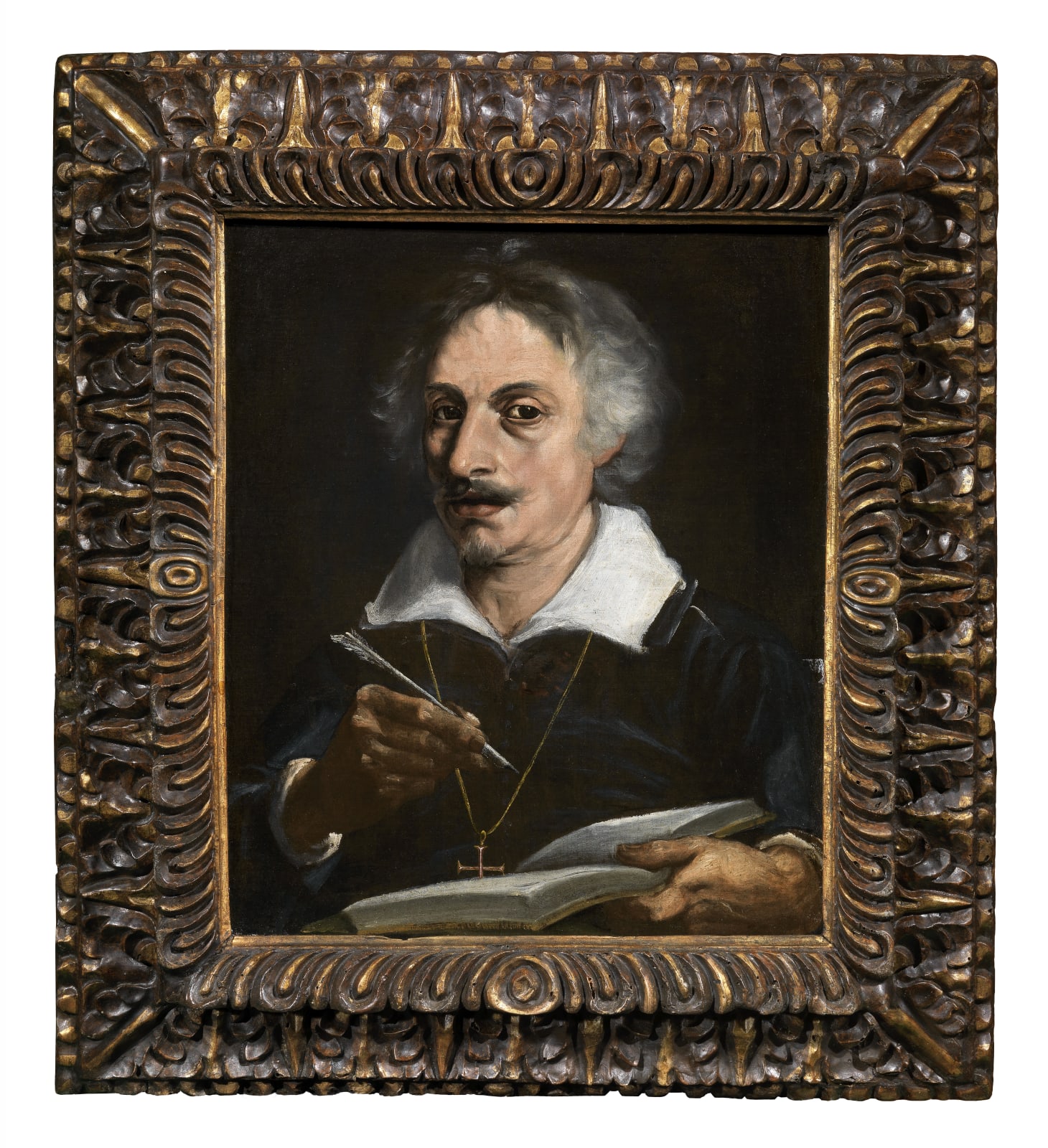
Paolo Guidotti Borghese (Lucca 1569 c.-Rome 1629)
This important painting by Paolo Guidotti Borghese has recently reappeared. Although it was known to art historians from old photographs, its traces had been lost. In 1945, when Luigi Grassi (1945, pp. 28-29) published it for the first time, he recognised its importance as “a pinnacle of Berninian portraiture in the field of painting”. Since then, the attribution of this painting has been the subject of a long-lasting debate: on the one hand, Grassi has insisted on Bernini’s authorship (1951, p. 106); on the other, Valentino Martinelli, has claimed it to be the likely self-portrait of Giovanni Baglione (1950, p. 104; 1959, pp. 93-96).
It was only thanks to the work of Italo Faldi, who had already made a significant contribution to the research regarding the artist from Lucca (Faldi 1957, pp. 278-295), that the attribution of the painting was finally established. Indeed, in 1961, Faldi flagged the existence of another version of the Self-Portrait, bearing the inscription “Pavlo Guidot: Lucc:e Pit:e E Sculto.e” (1961, pp. 297-299) . Despite the evidence offered by Faldi, the debate on the potential attribution of our painting to Bernini continued. Indeed, in 1964, it was reproposed by Salerno because of the remarkable quality of the painting.
There is no doubt, however, that our portrait is a particularly fine example of Guidotti’s talent as a portraitist. The Self-Portrait, which was probably conceived when the artist was fifty years old, dates to c.1620, and could have been executed with the occasion of Guidotti’s second election at Principe dell’Accademia di San Luca in 1619.
This chronology would place the artist’s birth around 1575, as further suggested by Baglione in the Vita that he dedicated to the painter in his Biographies (1642, p. 303): according to Baglione, Guidotti arrived in Rome in 1584-1585 as a young man.
The fresh brushwork that characterises this Self-Portrait, which tends to be more experimental and less true-to-life, at a time in which the painter felt freer, is similar to a masterpiece dating to the first decade of the Seicento, notably the David with the Head of Goliath (1608) from the Museo della Basilica di San Paolo: this painting displays a similar, powerful pictorial sprezzatura, especially in the effortless rendering of the hands, which are painted with rapid, unblended brushstrokes.
The painter paid more attention to the rendering of the sitter’s face, which evokes Orazio Borgianni’s work – as in the case of the Poet in the Ajaccio Museum, whose resemblance to Borgianni’s way of painting raises some questions regarding its attribution – even though Guidotti’s technique is consistently rougher, more synthetic, and uneven. This is clearly illustrated by the rendering of the book or the barely sketched fig.2 robe of the sitter in the painting discussed in this text. The level of experimentation that Guidotti achieves in our painting is even greater than that displayed on the exquisite Descent from the Cross in Lucca’s church of San Frediano (which could be dated around 1610), which is probably Guidotti’s true masterpiece as well as one of the most innovative Caravaggesque paintings to my knowledge.
The hands painted in the altarpieces have well-defined, concrete outlines.
The texture of the composition is, overall, well-blended (the painter expressed an interest in the anti-mimetic rendering of the draperies: Caravaggio, who was probably still alive when Guidotti “attacked” Lucca’s altarpiece, never achieved such degree of Baconesque disintegration of the pictorial matter).
In our Self-Portrait, the hands, portrayed in the foreground of the composition, are rendered with only a few brushstrokes.
Their proximity to the picture plane might induce the viewer to doubt that this composition was conceived at beginning of the seventeenth century. Guidotti is always surprising, especially when his works are compared to the finished and highly realistic rendering of some altarpieces from Lucca, also painted in the 1620s. In these compositions, the Seicento fever for experimentation is only weakly perceivable in the eccentric rendering of faces: the pictorial texture is thin, well-blended, almost ordinary; it is ultimately diametrically different from the surprising expressive fury which becomes palpable in our Self-Portrait.
Finally, after the rediscovery and cleaning of this painting, we can conclude that the one discussed here is the original version of the Self-Portrait by the artist and that the other version published by Faldi in 1961, is to be considered a copy.
Provenance
: We wish to thank G. Papi and M. Nicolaci for independently endorsing the attribution and for their essays on this work.